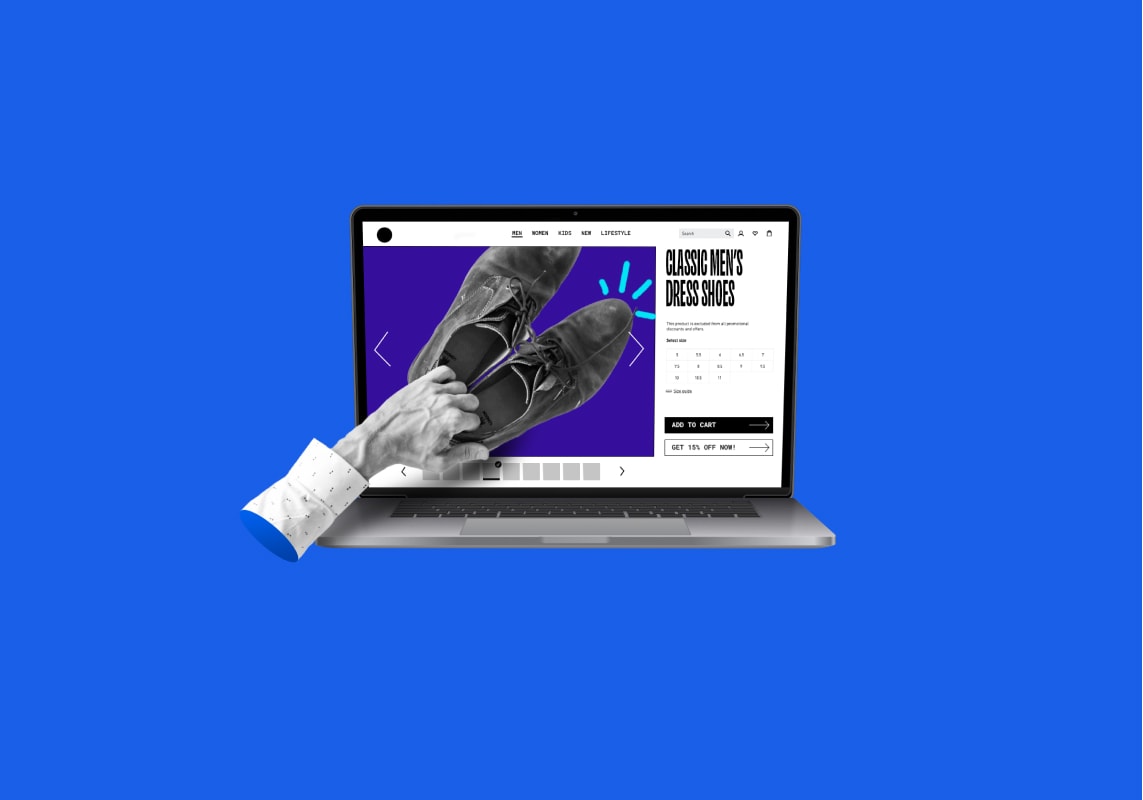“Best Buy has Thanksgiving plans. You’re not invited,” reads a recent CNN headline .
The big-box retailer will officially be closed on Thanksgiving Day. Walmart will, too. It’s not quite stop-the-presses news—many stores close on major holidays, after all—but it does represent a major turning point in what the American holiday shopping season looks like.
In years past, Black Friday and Cyber Monday, with the former an in-person sales event traditionally held on the day after Thanksgiving and the latter an online promotion held on the Monday following the holiday weekend, marked the beginning of the holiday shopping season. BFCM, as the two events are known, has historically brought in 20% or more of annual revenue, per the National Retail Federation .
To capitalize on those strong in-person sales, retailers have been opening earlier and earlier over the last few years, with sellers like Best Buy, Dick’s Sporting Goods, Kohl’s, Target, and Walmart all kicking off Black Friday sales on Thanksgiving Day itself in 2018.
2020, with its world-upending pandemic that made in-person shopping dangerous, put a stop to that, and it looks like retailers are doubling down on what they learned last year: the future of retail is omnichannel.
Black Friday isn’t dead, but it’s certainly different.
Here, we’ve built you a map of what Black Friday will look like over the next few years—from big trends to specific tips.
The product landscape will look different
Before we talk about how people are buying, we’ve got to look at what people are buying. And considering the combined impact of a widespread labor shortage and supply chain issues, both due to the pandemic, there will simply be less to buy this holiday season.
As Rob Garf, Salesforce VP and GM of Retail, told Diginomica last month:
Stay in-the-know regarding supply chain issues facing retailers by reading our latest eCommerce update.
“There are fewer workers, raw materials are expensive...that's going to put $12 billion of incremental dollars of costs into the supply chain. But the biggest hit is going to come in logistics. Unlike last year where it was all around the 'last mile', this is around inbound and getting it through the port, particularly here in the States with the Port of LA which has just had a real bottleneck.”
ASCM agrees , citing those COVID-19 port disruptions as well as flooding in Europe and China that has damaged warehouses, machines, and railways used to transport goods. Whereas previously, toys would have been shipped in July to arrive in August and placed on shelves by October, some toys haven’t even been made yet.
Hasbro and Mattel are using different sourcers, says the ASCM report , but even so, they’ll likely have higher prices to pass on to their consumers thanks to skyrocketing shipping costs. You thought having to pay $5.99 on your last online order was bad? Shipping a 40-foot container from China to the States used to cost $2,680 last July. Now it costs $18,346 on average.
A general rule of thumb to consider? As we enter the second pandemic-influenced holiday season, consumers will understand shipping delays and low product availability, but they’ll still be looking for products that can increase their quality of life and enjoyment.
The takeaway: Whether it’s luxury jewelry or a new suitcase for eventual travel, buyers will be looking at not just needs, which occupied much of 2020 shopping, but also wants—they just may have to accept that they’ll take a while to arrive.
Black Friday is now an online shopping holiday
Despite stay-at-home orders, widespread layoffs and furloughs, and heightened anxiety about the coronavirus, Black Friday 2020 broke records. Not because people were braving the pandemic to wait in line for doorbusters (though some did ), but because shoppers went online—and spent big.
Black Friday 2020 was the second-biggest eCommerce spending day in U.S. history (behind only Cyber Monday 2019), reports ABC . Consumers spent $9 billion, a 21% increase from the year before.
Counted in that number, though, are shoppers who bought online to pick up in-store or curbside, which, while technically still qualifying as eCommerce, has a slightly different flavor of it.
The takeaway: Omnichannel retail is the future, and retailers who offer flexible options—from buy online, pick up in store to regular eCommerce—will succeed.
Online holiday shopping sales are only going to move earlier and earlier
Black Friday being so big online means that Cyber Monday is no longer the anchor event for eCommerce retailers. Sure, that only drags their marketing forward a few days, but when you think about the fact that all retailers are going to be doing the same thing, it becomes more important than ever that eCommerce sellers have planned out their cadences early.
(Though don’t write Cyber Monday off: Adobe’s 2020 data shows that conversion rates on CM were slightly higher, at 7.2% for laptops and 3.3% for smartphones, than BF, at 6.8% and 3.1%, respectively.)
Take a look at the Goliath of eCommerce and how they’re approaching it: a new job posting shows that Amazon is planning an entire role around managing deals, from daily drip campaigns to big pushes around BFCM and Prime Day. It’s not a one-month sprint of their marketing department but rather someone’s full-time job.
The takeaway: Holiday shopping deals will start dropping in late September, early October, and will continue through the end of the year.
More ad dollars are moving into digital marketing
Customer acquisition costs keep rising , and as big retailers focus more and more on eCommerce sales, that trend will only continue.
And spending more and more to get new customers just isn’t sustainable.A Salesforce report featuring data from over a billion shoppers found that the global conversion rate was only 2.4%. Many eCommerce sellers, including many SMBs, just won’t be able to keep up with that spending.
What might make more sense for them? Focusing on improving their current customer satisfaction .
The takeaway: Digital marketing isn’t the only tool in a seller’s arsenal. Great customer service that turns one-off customers into recurring buyers, offerings like product protection that drive up AOV , and figuring out new ways to get your products in front of customers—like with livestream shopping —can all help you keep old customers and land new ones, without a higher AdWords budget.
Owned channels are the future
The WSJ reports that digital ad spending has grown by 26% in 2021 so far. To stand out from that noise, many vendors are moving to focus more on owned marketing, or using their brand channels, from websites to blogs to email lists to SMS campaigns, instead of relying on social or display ads.
Per eMarketer coverage of Juniper Research and CommerceNext report , global business SMS traffic grew by 10% in 2020, with 51% of retail marketers planning to increase investment in that space over that year.
The takeaway: Email and SMS campaigns have never been more valuable—especially those that go beyond touting promotions to actually add value, whether with gift guides, product reviews, or usage tips.
Testing should start now
Before running big campaigns in September, October, and November, retailers need to be working through the mechanics of their strategies now.
Which funnels work best for which audience segments? What automation paths have what success? How will campaigns be coordinated across different platforms?
And importantly, how are you addressing customers’ actual needs through product improvements and custom campaigns?
For instance, consider a recent eCommerce vendor who decided to launch (and thoroughly test, pre-launch) a password-less checkout experience after they’d surveyed customers and found that a significant percentage of their abandoned carts were caused by buyers not wanting the hassle of having to log in. Doing that research before the holiday season let them address the issues they found with time to spare.
The takeaway: Understand where your customers’ pain points are and customize your campaigns and products to address them, using A/B data to refine your approach.
We’re facing a perpetual peak season—here are 5 tips on what to do about it
1. Plan for SEO early and often
If you want your product pages to rank for Black Friday or holiday shopping terms, it’s time to start planning now. Confirm your SEO strategy no later than early September, and get to work rolling out product page updates by the end of that month. Make sure you also set a note to go back in post-holidays and update them again with new targeted keywords, whether for 2022 holidays or generic gifting.
2. Bring together an eCommerce roundtable, if you don’t already have one
Sales strategies that are created and executed by your marketing team alone are doomed. Why’s that? Because a customer‘s experience of that strategy will involve the work of a bunch of other teams, from customer success to operations to fulfillment.
If those teams are relatively siloed in your current workflows, ask each group to nominate a representative to meet regularly with other departments to make sure that you’re all aligned on goals and tactics and ready to support each other. Bonus points if you give the group a solid name, like Mission Control or $HQ, and even more points if you find a way to bring strategy and ops employees together, like having your marketing team help pack and ship orders.
3. Have backups for your backups
Let’s say your entire marketing strategy for BFCM is based around one major “doorbuster”: a big discount on a TV or watch or basketball hoop, or some other item that you sell that customers are excited about. What will you do when you sell out of that? Especially if you’ve read the writing on the wall, launched sales before BF, and end up selling out in October or early November? You’ll go to your backup plan. Manage your inventory closely and get marketing packages, with everything from product pages to videos to banner ads, ready to launch if you do sell out.
4. Determine your post-BFCM cadences
Done right, early holiday season sales will bring you a lot of new buyers. Do you know how you’ll turn them from one-time purchasers into long-term customers with high CLVs ?
Try a value-add approach. Telling buyers about purchase protection options in transactional emails can be a touchpoint Trojan Horse for building long-term trust. Storytelling, too, like with emails that explain the production of whatever customers have just purchased, or the values behind your brand, can be helpful.
You can even plan to run a New Year’s campaign around resolutions and the ways that their holiday purchases (and other products) can be used to support lifestyle goals.
Write those cadences now—future you will be grateful.
5. Get creative with your offers
If you know you can’t compete with bigger vendors, why not end your holiday promotions before their promotions even start?
What about offering exclusive free gifts for buyers who give you their phone number (to grow your owned media list)?
Or going rogue with bold email subject lines? (Here’s some inspiration along those lines, no pun intended.)
Stay relevant in a crowded landscape with personable, relevant, creative pushes—in November and beyond.
See you on Black Friday
And Cyber Monday, and Cyber Week, and, as we’ve just laid out, probably all fall.
Until then, happy selling—and happy shopping!
SIGN UP FOR OUR NEWSLETTER











